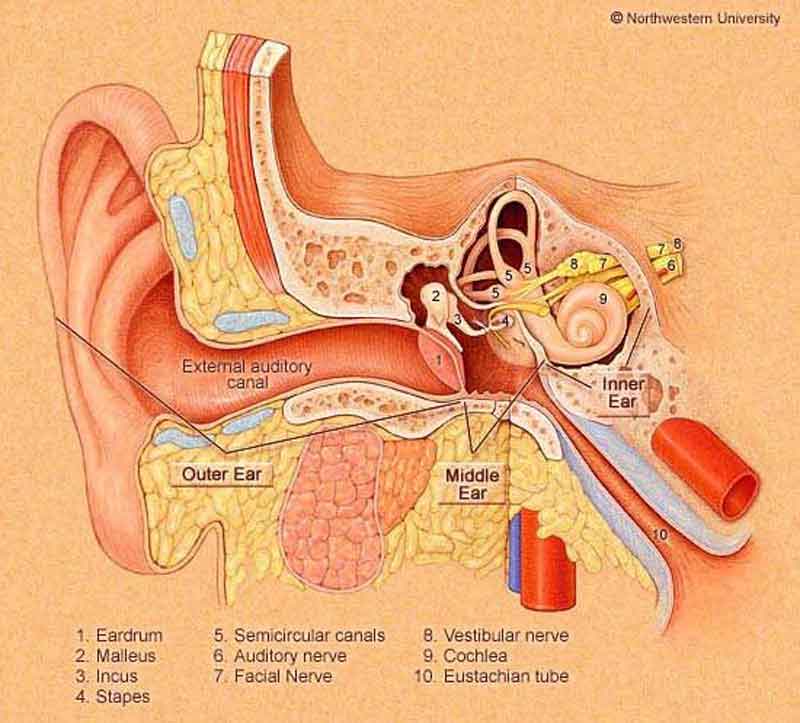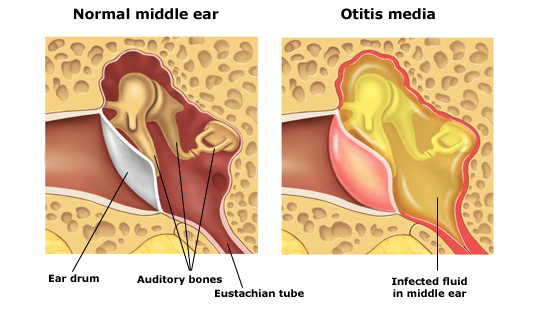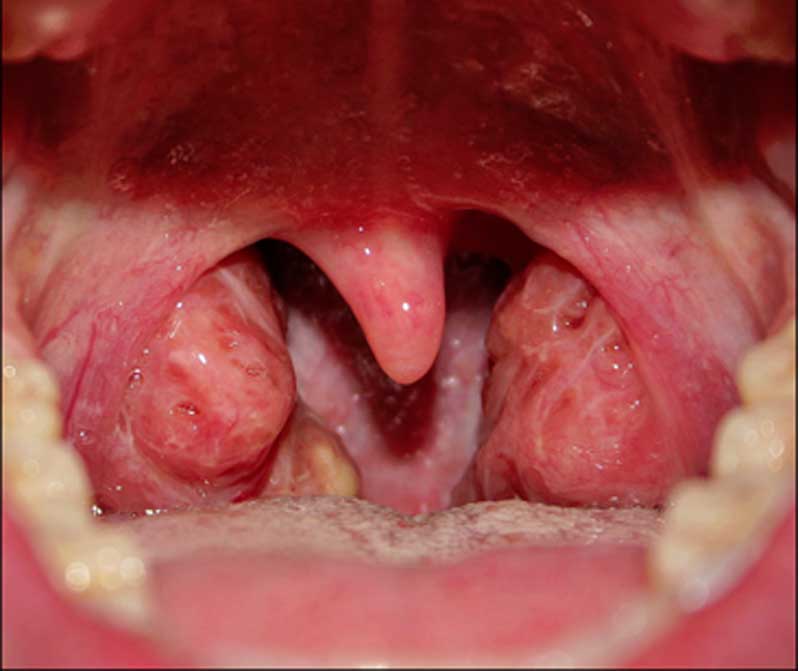About acute otitis media
How does the ear work?
The outer ear collects sounds. The middle ear is a pea sized, air-filled cavity separated from the outer ear by the paper-thin eardrum. Attached to the eardrum are three tiny ear bones. When sound waves strike the eardrum, it vibrates and sets the bones in motion that transmit to the inner ear. The inner ear converts vibrations to electrical signals and sends these signals to the brain – it also helps maintain balance.
Normal ear function

A healthy middle ear contains air at the same atmospheric pressure as outside of the ear, allowing free vibration. Air enters the middle ear through the narrow Eustachian tube that connects the back of the nose to the ear. When you yawn and hear a pop, your Eustachian tube has just sent a tiny air bubble to your middle ear to equalize the air pressure – the sound of the Eustachian tube opening can often be heard as a crackle.
Middle ear infection
What is otitis media?

Otitis media means inflammation of the middle ear due to ear infection. The inflammation occurs as a result of a middle ear infection – it can occur in one or both ears. Otitis media is the most frequent diagnosis recorded for children who visit doctors for illness – it is also the most common cause of hearing loss in children.
Although otitis media is most common in young children, it also affects adults occasionally. Otitis media ear infection occurs most commonly in the winter and early spring months.
Is otitis media serious?
Yes, otitis media can be serious because of the severe earache and hearing loss it can cause. Hearing loss, especially in children, may impair learning capacity and even delay speech development. However, if it is treated promptly and effectively, hearing can almost always be restored to normal.
Otitis media is also serious because the ear infection can spread to nearby structures in the head, especially the mastoid. So it is important to recognize the symptoms of ear infection and to get immediate attention from your doctor.
What causes otitis media?
Blockage of the Eustachian tube during a cold, allergy, or upper respiratory infection and the presence of bacteria or viruses lead to the accumulation of fluid, a build-up of pus and mucus, behind the eardrum.
This is the infection called acute otitis media – the build up of pressurized pus in the middle ear can cause:
- Earache
- Ear pain
- Hearing loss
- Imbalance
- Redness
- Swelling
Otitis media causes the eardrum to stop working properly. This causing problems with hearing.
Consequences of otitis media ear infection
Sometimes the eardrum ruptures, causing ear drum perforation, and pus drains out of the ear.
More commonly, the pus and mucus remain in the middle ear due to the swollen and inflamed Eustachian tube – this is called middle ear effusion or serous otitis media.
Often after the acute infection has passed, the effusion remains and becomes chronic, lasting for weeks, months, or even years – this condition leads to frequent recurrences of the acute infection and may cause difficulty in hearing.
Ear examination
- During an ear examination, the doctor will use an instrument called an otoscope to assess the ear
- The doctor will perform an examination to check for redness in the ear and/or fluid behind the eardrum
- With the gentle use of air pressure, the doctor can also see if the eardrum moves – if the eardrum doesn’t move and/or is red, an ear infection is probably present
Hearing tests for otitis media
- An audiogram tests if hearing loss has occurred by presenting tones at various pitches
- A tympanogram measures the air pressure in the middle ear to see how well the Eustachian tube is working and how well the eardrum can move
Ear infection treatment – remedies for otitis media
- The doctor may prescribe one or more medications – it is important that all the medication(s) be taken as directed and that any follow-up visits with your doctor be kept
- Often, antibiotics to fight the infection will make the earache go away rapidly, but the infection may need more time to clear up – so be sure that the medication is taken for the full time your doctor has indicated
- Other medications that your doctor may prescribe include an antihistamine (for allergies), a decongestant (especially with a cold), or both
- Sometimes the doctor may recommend a medication to reduce fever and/or pain
- Call your doctor if you have any questions about you or your child’s medication or if symptoms do not clear
What other treatment may be necessary?
Most of the time, otitis media clears up with proper medication and home treatment. In many cases, however, further treatment may be recommended. An operation, called a myringotomy may be recommended. This involves a small surgical incision (opening) into the eardrum to promote drainage of fluid and to relieve pain. The incision heals within a few days with practically no scarring or injury to the eardrum. The surgical opening can heal so fast that it often closes before the infection and the fluid are gone.
A ventilation tube, ear grommet, can be placed in the incision, preventing fluid accumulation and thus improving hearing. With a grommet in place you should keep water out of the ears because it could start an infection. Otherwise, the tube causes no trouble, and you will probably notice a remarkable improvement in hearing and a decrease in the frequency of ear infections.
Ear infections and the tonsils and adenoid

Otitis media and tonsil and adenoid enlargement
Otitis media may recur as a result of chronically infected adenoids and tonsils – if this becomes a problem, your doctor may recommend removal of one or both. The tonsils and adenoid can be removed at the same time as ventilation tubes are inserted. Otitis media is generally not serious if it is promptly and properly treated – with the help of your doctor, you and/or your child can feel and hear better very soon. Click here to find out more.
Ear infection symptoms : What are the symptoms of otitis media?
In infants and toddlers look for:
- Pulling or scratching at the ear, especially if accompanied by other symptoms
- Hearing problems
- Crying, irritability
- Fever
- Vomiting
- Ear drainage
In young children, adolescents, and adults look for:
- Earache
- Feeling of fullness or pressure
- Hearing problems
- Dizziness, loss of balance
- Nausea, vomiting
- Ear drainage
- Fever
Remember, without proper treatment, damage from an ear infection can cause chronic or permanent hearing loss – contact your ENT doctor if you have any questions.



